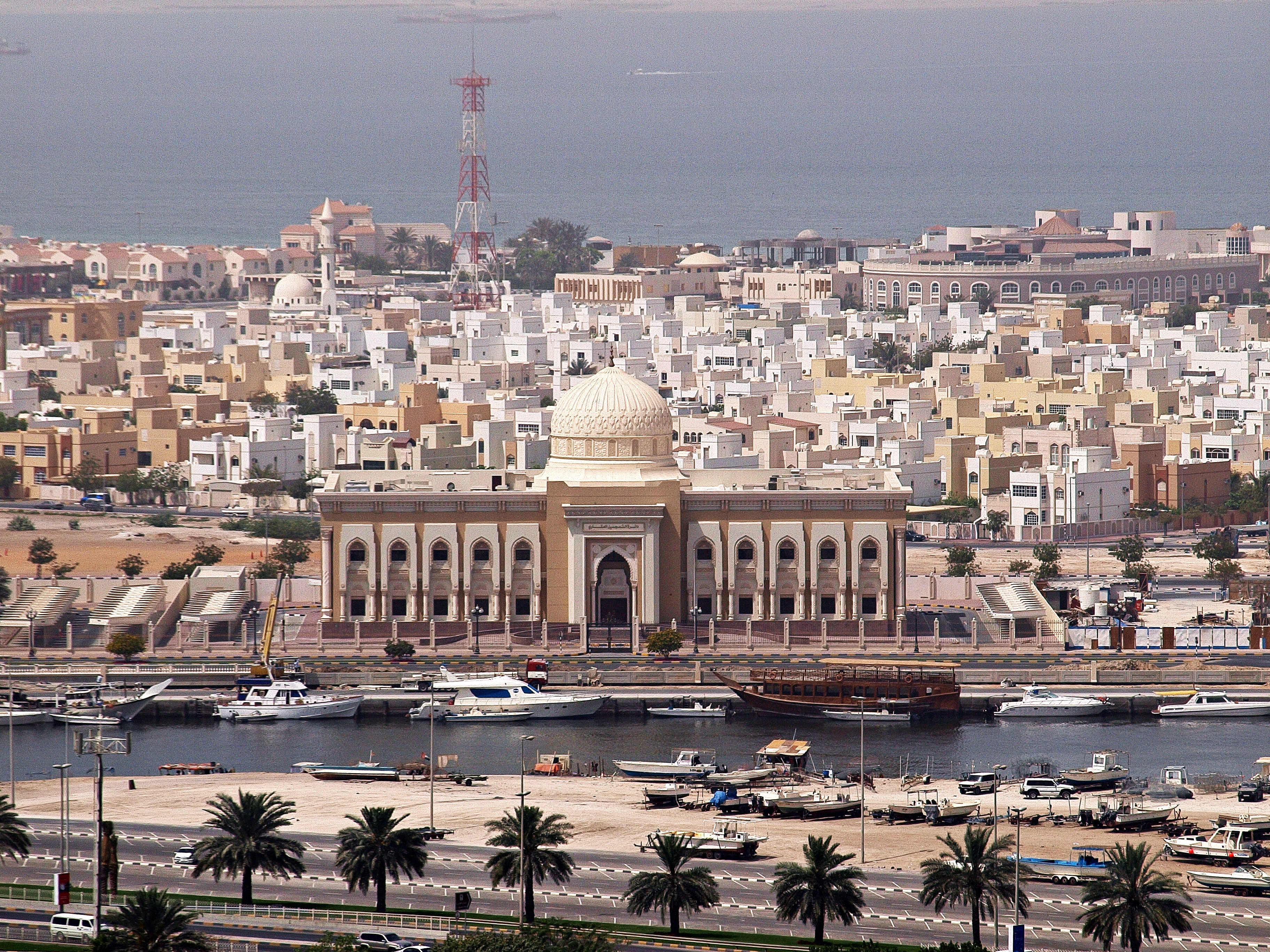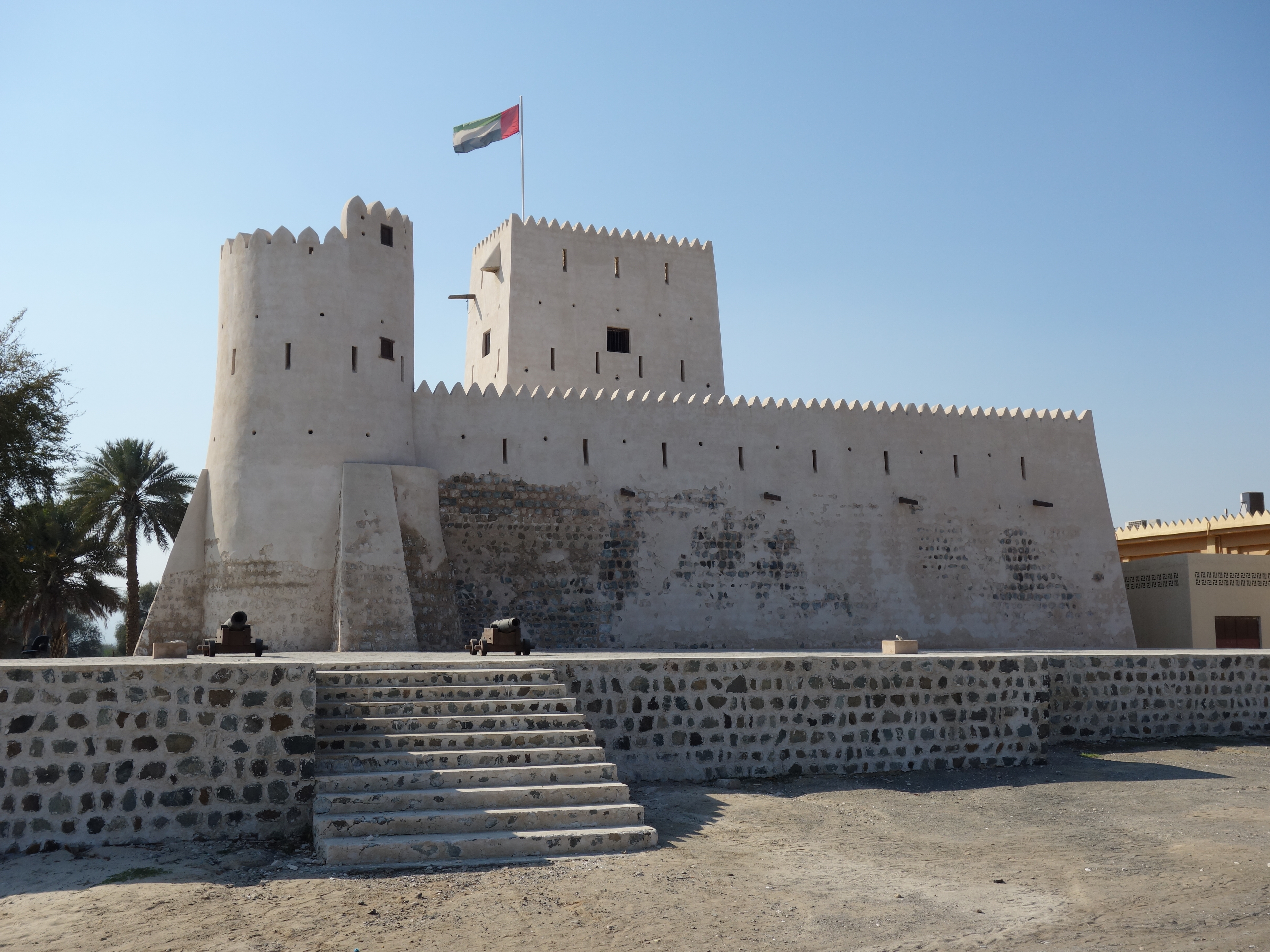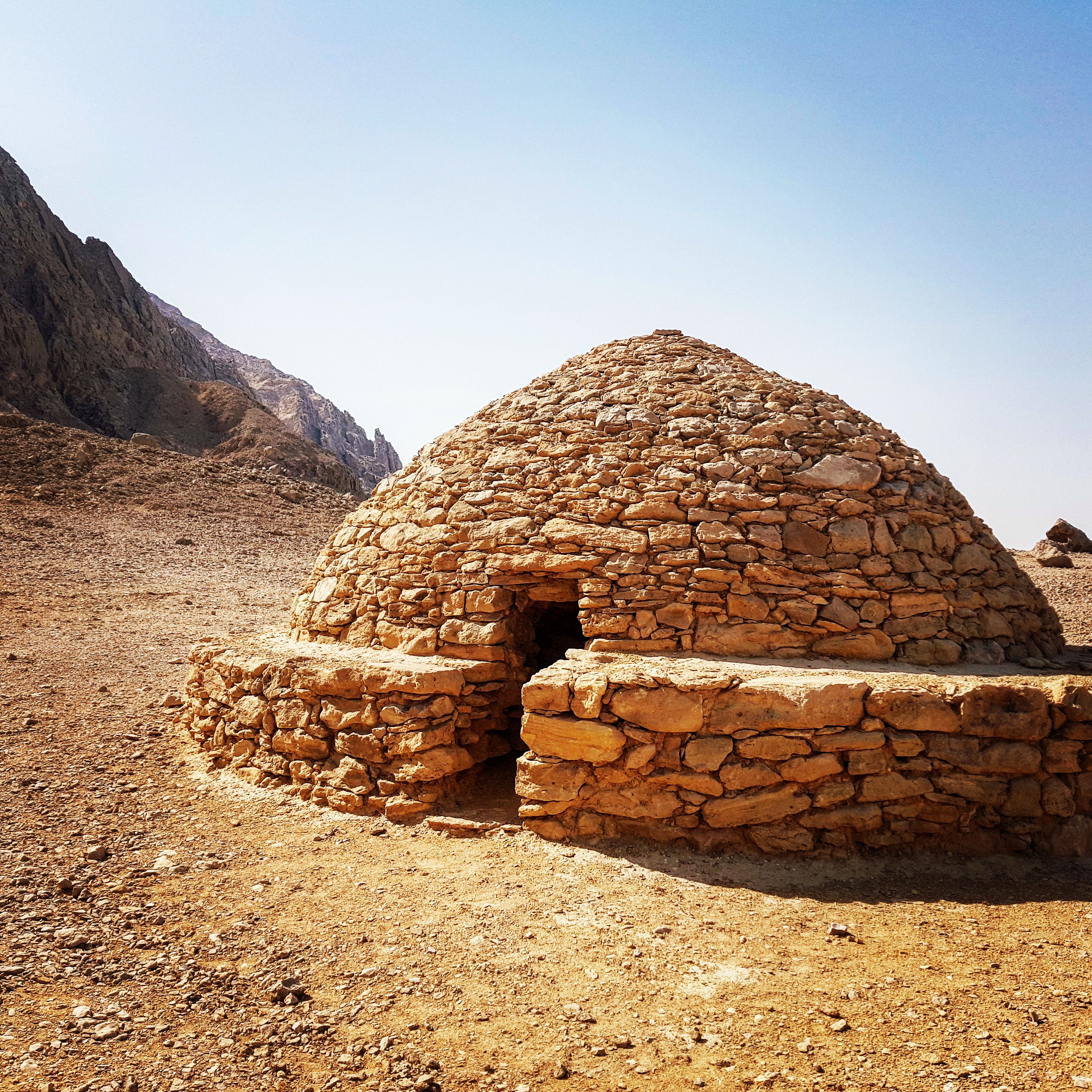|
Umm Al-Nar Culture
Umm Al Nar ( ar, أُمّ الـنَّـار, Umm an-Nār or Umm al-Nar, lit=Mother of the Fire) is a Bronze Age culture that existed around 2600-2000 BCE in the area of modern-day United Arab Emirates and Northern Oman. The Arabic name has in the past frequently been transliterated as Umm an-Nar and also Umm al-Nar. The etymology derives from the island of the same name which lies adjacent to Abu Dhabi city and which provided early evidence and finds attributed to the period. The Umm Al Nar people were important regional trading intermediaries between the ancient civilisations of Sumeria in Mesopotamia and the Indus Valley Harappan culture. Known to the Sumerians as ' Magan', the area was the source of their copper and diorite as well as a trading entrepot for other goods from the Indus Valley, including carnelian jewellery. Location The key site is well protected, but its location between a refinery and a sensitive military area means public access is currently restricted. Th ... [...More Info...] [...Related Items...] OR: [Wikipedia] [Google] [Baidu] |
Bronze Age
The Bronze Age is a historic period, lasting approximately from 3300 BC to 1200 BC, characterized by the use of bronze, the presence of writing in some areas, and other early features of urban civilization. The Bronze Age is the second principal period of the three-age system proposed in 1836 by Christian Jürgensen Thomsen for classifying and studying ancient societies and history. An ancient civilization is deemed to be part of the Bronze Age because it either produced bronze by smelting its own copper and alloying it with tin, arsenic, or other metals, or traded other items for bronze from production areas elsewhere. Bronze is harder and more durable than the other metals available at the time, allowing Bronze Age civilizations to gain a technological advantage. While terrestrial iron is naturally abundant, the higher temperature required for smelting, , in addition to the greater difficulty of working with the metal, placed it out of reach of common use until the end of ... [...More Info...] [...Related Items...] OR: [Wikipedia] [Google] [Baidu] |
Emirate Of Sharjah
The Emirate of Sharjah (; ar, إِمَارَة ٱلشَّارِقَة ') is one of the emirates of the United Arab Emirates, which covers and has a population of over 1,400,000 (2015). It comprises the capital city of Sharjah, after which it is named, and other minor towns and exclaves such as Kalba', Al Dhaid, Dibba Al-Hisn and Khor Fakkan. The emirate is an absolute monarchy. It has been ruled by Sultan bin Muhammad Al-Qasimi since 1972, except for a six-day period during an attempted coup d'etat by his brother, Sheikh Abdulaziz bin Mohammed Al-Qasimi. History Human settlement in the area covered by the emirate has existed for over 120,000 years, with significant finds made of early axes and stone tools as well as Copper and Iron Age implements in Al Dhaid, Al Thuqeibah, Mileiha, Tell Abraq, Muwailah, Al Madam and Jebel Faya. Archaeological finds in the Mleiha area point to human habitation consistent with the spread of humanity from Africa to the wider world, evid ... [...More Info...] [...Related Items...] OR: [Wikipedia] [Google] [Baidu] |
Wadi Suq Culture
The Wadi Suq culture defines human settlement in the United Arab Emirates and Oman in the period from 2,000 to 1,300 BCE. It takes its name from a wadi, or waterway, west of Sohar in Oman and follows on from the Umm Al Nar culture. Although archaeologists have traditionally tended to view the differences in human settlements and burials between the Umm Al Nar and Wadi Suq periods as the result of major external disruption (climate change, the collapse of trade or threat of war), contemporary opinion has moved towards a gradual change in human society which is centred around more sophisticated approaches to animal husbandry as well as changes in the surrounding trade and social environments. History The transition between Umm Al Nar and Wadi Suq is thought to have taken some 200 years and more, with finds at the important Wadi Suq site of Tell Abraq in modern Umm Al Qawain showing evidence of the continuity of Umm al-Nar burials. Evidence of increased mobility among the popula ... [...More Info...] [...Related Items...] OR: [Wikipedia] [Google] [Baidu] |
Domestication Of The Camel
A camel (from: la, camelus and grc-gre, κάμηλος (''kamēlos'') from Hebrew or Phoenician: גָמָל ''gāmāl''.) is an even-toed ungulate in the genus ''Camelus'' that bears distinctive fatty deposits known as "humps" on its back. Camels have long been domesticated and, as livestock, they provide food (milk and meat) and textiles (fiber and felt from hair). Camels are working animals especially suited to their desert habitat and are a vital means of transport for passengers and cargo. There are three surviving species of camel. The one-humped dromedary makes up 94% of the world's camel population, and the two-humped Bactrian camel makes up 6%. The Wild Bactrian camel is a separate species and is now critically endangered. The word ''camel'' is also used informally in a wider sense, where the more correct term is "camelid", to include all seven species of the family Camelidae: the true camels (the above three species), along with the "New World" camelids: the llama, ... [...More Info...] [...Related Items...] OR: [Wikipedia] [Google] [Baidu] |
Elam
Elam (; Linear Elamite: ''hatamti''; Cuneiform Elamite: ; Sumerian: ; Akkadian: ; he, עֵילָם ''ʿēlām''; peo, 𐎢𐎺𐎩 ''hūja'') was an ancient civilization centered in the far west and southwest of modern-day Iran, stretching from the lowlands of what is now Khuzestan and Ilam Province as well as a small part of southern Iraq. The modern name ''Elam'' stems from the Sumerian transliteration ''elam(a)'', along with the later Akkadian ''elamtu'', and the Elamite ''haltamti.'' Elamite states were among the leading political forces of the Ancient Near East. In classical literature, Elam was also known as Susiana ( ; grc, Σουσιανή ''Sousiānḗ''), a name derived from its capital Susa. Elam was part of the early urbanization of the Near East during the Chalcolithic period (Copper Age). The emergence of written records from around 3000 BC also parallels Sumerian history, where slightly earlier records have been found. In the Old Elamite period (Midd ... [...More Info...] [...Related Items...] OR: [Wikipedia] [Google] [Baidu] |
Umm Al Nar Bottle
Umm () means ''mother'' in Arabic. It is a common Arabic feminine given name and generic prefix for Semitic place names. It may refer to: Places Bahrain * Ain Umm Sujoor, an archaeological site * Umm an Nasan, an island * Umm as Sabaan, an islet Egypt * Umm Kulthum Museum, in Old Cairo * Umm Naggat mine * Umm El Qa'ab, a necropolis * Zawyet Umm El Rakham, an archaeological site Iraq * Umm al Binni lake * Umm Qasr, a port city ** Umm Qasr Port Israel * Umm Batin, a village * Umm al-Fahm, a city * Shibli–Umm al-Ghanam, a town *Umm al-Hiran, a village * Umm al-Qutuf, a village Jordan *Umm al Birak, a town *Jabal Umm Fruth Bridge * Jabal Umm ad Dami, a mountain * Mount Umm Daraj * Umm el-Jimal, a village *Umm al Kundum, a town * Umm Qais, a town * Umm al Qanafidh, a town * Umm Shujayrah al Gharbiyah, a town * Umm Zuwaytinah, a town Kuwait * Umm al Maradim Island * Umm an Namil Island, Kuwait Bay, Persian Gulf Libya * Umm al Ahrar, an oasis * Qabr Umm al Hishah, an oasis * Umm ... [...More Info...] [...Related Items...] OR: [Wikipedia] [Google] [Baidu] |
Bahrain
Bahrain ( ; ; ar, البحرين, al-Bahrayn, locally ), officially the Kingdom of Bahrain, ' is an island country in Western Asia. It is situated on the Persian Gulf, and comprises a small archipelago made up of 50 natural islands and an additional 33 artificial islands, centered on Bahrain Island which makes up around 83 percent of the country's landmass. Bahrain is situated between Qatar and the northeastern coast of Saudi Arabia, to which it is connected by the King Fahd Causeway. According to the 2020 census, the country's population numbers 1,501,635, of which 712,362 are Bahraini nationals. Bahrain spans some , and is the third-smallest nation in Asia after the Maldives and Singapore. The capital and largest city is Manama. Bahrain is the site of the ancient Dilmun civilization.Oman: The Lost Land [...More Info...] [...Related Items...] OR: [Wikipedia] [Google] [Baidu] |
Kalba
Kalba () is a city in the Emirate of Sharjah in the United Arab Emirates (UAE). It is an exclave of Sharjah lying on the Gulf of Oman coast north of Oman. Khor Kalba (Kalba Creek), an important nature reserve and mangrove swamp, is located south of the town by the Omani border. Kalba Mangrove reserve is open to the public and was developed as an eco-tourism resort by the Sharjah Investment and Development Authority (Shurooq). A number of conservationists and ecologists have expressed concern regarding the project. History Shell middens dating back to the fourth millennium BCE have been found at Kalba, as well as extensive remains of Umm Al Nar era settlement. Portuguese The town was captured by the Portuguese Empire in the 16th century and was referred to as ''Ghallah''. It was part of a series of fortified cities that the Portuguese used to control access to the Persian Gulf and the Gulf of Oman, e.g. Khor Fakan, Muscat, Sohar, Seeb, Qurayyat, Muttrah. Kalba Fort, toda ... [...More Info...] [...Related Items...] OR: [Wikipedia] [Google] [Baidu] |
Bidiya
Bidiya or Bidiyyah ( ar, بِـدِيَّـة) is a town in ''Wilayah Bidiyyah'' ( ar, ولايـة بـديـة, Province of Bidiyyah), in the middle of the Eastern Region of the Sultanate of Oman. It is located about from the capital city, Muscat. It comprises fifteen villages, including Al Muntarib, Al Gabbi, Shahik, Al Rakah, Al Hawiyah, Al Shariq, Al Wasil and Al Dhahir.Ministry of Interior Translated. Tourism It is well known for the golden sand dunes that attract tourists from Oman and outside Oman. There are some ancient forts spread over Bidiyah, including the Al Muntarib Fort which was renowned by the Ministry of Culture. In addition, |
Hili Archaeological Park
Hili Archaeological Park ( ar, حَدِيْقَة آثَار ٱلْهِيْلِي, Ḥadīqat Āthar Al-Hīlī) is the location of a Bronze Age site in Al Ain, Emirate of Abu Dhabi, the United Arab Emirates. Description and history Hili is the largest Bronze Age site in the UAE and dates from the 3rd millennium BCE. Other remains include settlements, tombs, and a ''falaj'' dating from the Iron Age. Some of the site is located outside the park in a protected area. Finds from the site can be seen in the Al Ain National Museum in central Al Ain. The Hili Grand Tomb is a tower measuring in diameter that has been reconstructed. The tombs belong to the Umm al-Nar culture. In May 2019 the Abu Dhabi Department of Culture & Tourism reported that fingerprints about 3000 years old were found at Hili II. They apparently belonged to craftsmen who constructed a wall at the site. See also * Al Ain Oasis * Tawam (region) ** Al-Buraimi * Archaeological Sites of Bat, Al-Khutm and Al-Ayn * Ha ... [...More Info...] [...Related Items...] OR: [Wikipedia] [Google] [Baidu] |
Hafit Period
The Hafit period defines early Bronze Age human settlement in the United Arab Emirates and Oman in the period from 3200 to 2600 BC. It is named after the distinctive beehive burials first found on Jebel Hafit, a rocky mountain near Al Ain, bordering the Rub Al Khali desert. Hafit period tombs and remains have also been located across the UAE and Oman in sites such as Bidaa bint Saud, Jebel Al-Buhais and Buraimi. Discoveries The first find of Hafit era tombs is attributed to the Danish archaeologist PV Glob in 1959, and the first of many excavations of these took place a few years later. Located in the area south of the city of Al Ain, the Jebel Hafeet Desert Park contains the original necropolis of Hafit Graves which led to the naming of this period in human history in the emirates. A series of ridges leading from the main part of Jebel Hafit toward Al Ain each contain groups of Hafit tombs. Finds at Jebel Hafit include the remains of some 317 circular stone tombs and settl ... [...More Info...] [...Related Items...] OR: [Wikipedia] [Google] [Baidu] |
Ubaid Period
The Ubaid period (c. 6500–3700 BC) is a prehistoric period of Mesopotamia. The name derives from Tell al-'Ubaid where the earliest large excavation of Ubaid period material was conducted initially in 1919 by Henry Hall and later by Leonard Woolley. In South Mesopotamia the period is the earliest known period on the alluvial plain although it is likely earlier periods exist obscured under the alluvium. In the south it has a very long duration between about 6500 and 3800 BC when it is replaced by the Uruk period.Carter, Robert A. and Philip, Graham. 2010. 'Deconstructing the Ubaid' in Carter, Robert A. and Philip, Graham (eds.) ''Beyond the Ubaid: Transformation and Integration in the Late Prehistoric Societies of the Middle East''. Chicago: The Oriental Institute of the University of Chicago. p. 2. In Northern Mesopotamia the period runs only between about 5300 and 4300 BC. It is preceded by the Halaf period and the Halaf-Ubaid Transitional period and succeeded by the Late ... [...More Info...] [...Related Items...] OR: [Wikipedia] [Google] [Baidu] |





.png)


